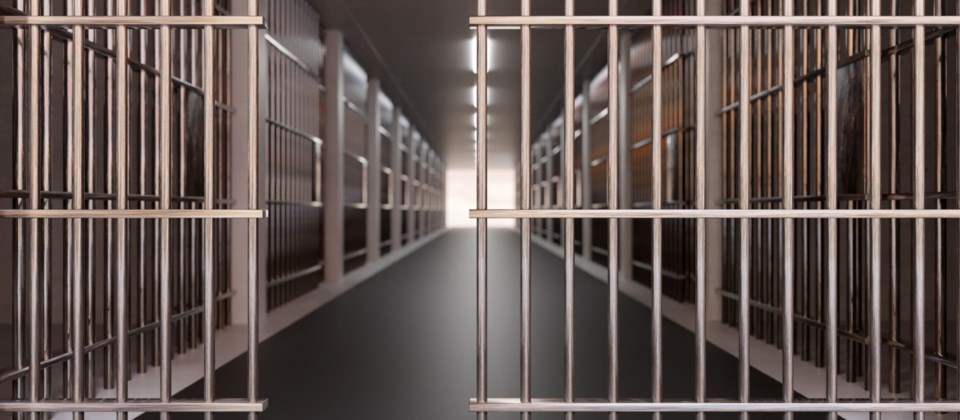Non-Indigenous people charged with crimes are more likely to receive bail than Indigenous people
Jeremy Appel / Local Journalism Initiative Reporter / Alberta Native News Jul 20, 2023 10:00 PM

NationTalk: Saskatoon Today: ALBERTA NATIVE NEWS — Saskatchewan has Canada’s highest rate of Indigenous over-representation in provincial custody, with Alberta in second place, according to new data from Statistics Canada.
According to StatsCan’s over-representation index, Indigenous people in Alberta were 10.8 per cent more likely to be incarcerated than non-Indigenous people in 2020/21. This rate is significantly lower than the 17.7 per cent over-representation in Saskatchewan.
The survey, however, includes data from just five provinces — Alberta, Saskatchewan, B.C., Ontario and Nova Scotia.
B.C.’s rate of 7.9 per cent is the nation’s third-highest, followed by Ontario at 6.3 per cent and Nova Scotia at 1.9 per cent.
Because the data is provincial, it excludes those serving sentences longer than two years, who are placed in federal penitentiaries.
It includes those serving in pre-trial custody and sentences less than two years, who are placed in remand, as well as those who are under house arrest. The bulk of people in provincial custody, the index notes, are those in pre-trial custody, making up 67 per cent.
Overall, the incarceration rate in provincial institutions for Indigenous people across the five provinces surveyed in 2020/21 was 42.6 people per 100,000, compared to a rate of four for non-Indigenous people.
The index, however, adjusts these figures on a province-by-province basis to account for demographic differences such as age and gender.
While the overall incarceration rate decreased overall from 2019/2020 to 2020/21, it decreased more for non-Indigenous people than Indigenous people, contributing to a greater over-representation of Indigenous people in custody.
Indigenous women are more over-represented in provincial custody than men. In Alberta, the rate for women is 15.5 per cent higher than for men, compared to 28.5 per cent higher in Saskatchewan, 12.5 per cent in Ontario, 11.2 per cent in B.C. and 3.3 per cent in Nova Scotia.
The index notes how non-Indigenous people charged with crimes are more likely to receive bail than Indigenous people, leaving a disproportionate figure of Indigenous people in pre-trial custody.
Bail figures were only available for Alberta, Saskatchewan and B.C. The ratio between average counts for bail and remand was 4.9 (that is for everyone one person in remand, almost five people were on bail), compared to 2.6 for the Indigenous population.
Alberta Justice Minister Mickey Amery told the Alberta Today newsletter that the UCP government is developing an Indigenous Justice Strategy in collaboration with the Alberta Court of Justice.
This, he said, will integrate culturally appropriate, restorative and holistic approaches to justice for Indigenous Peoples.
Amery also cited Gladue reports, which have been in use since 1999. These reports, intended to address the over-representation of Indigenous people in custody, provide crucial context for judges when sentencing Indigenous offenders, including the legacy of residential schools, foster care, loss of culture and addiction.
“Justices consider the impacts of these factors when they make decisions relating to an Indigenous person appearing in their court,” Amery noted.
He added that bail decisions are made by judges based on guidelines provided by the federal government.
NDP Indigenous relations and reconciliation critic, MLA Brooks Arcand-Paul, a lawyer from Alexander First Nation, told Alberta Today that the especially disproportionate incarceration rates on the Prairies show the central role of policing in colonialism.
“On one side you have my folks, my people that don’t trust the government, that don’t trust our laws because the system doesn’t work for us,” he said. “Now, on the other hand, you have the government or police that are intent on locking us up.”
He added that he would like to see more disaggregated data, including whether Indigenous people are more likely to be arrested in cities, or First Nations reserves and Metis settlements and how many of those incarcerated are LGBTQ2S+, as well as socio-economic data.
However, Arcand-Paul said, collecting more data cannot be a pretext for inaction.
“I’m tired of hearing these reports and I’m tired because it’s the exact same dark picture every single time,” Arcand-Paul said. “Despite the efforts of federal governments to alleviate these numbers, the provinces have really just failed at every step.”
Jeremy Appel / Local Journalism Initiative Reporter / Alberta Native News
Click on the following link to view the complete report:
Over-representation of Indigenous persons in adult provincial custody, 2019/2020 and 2020/2021